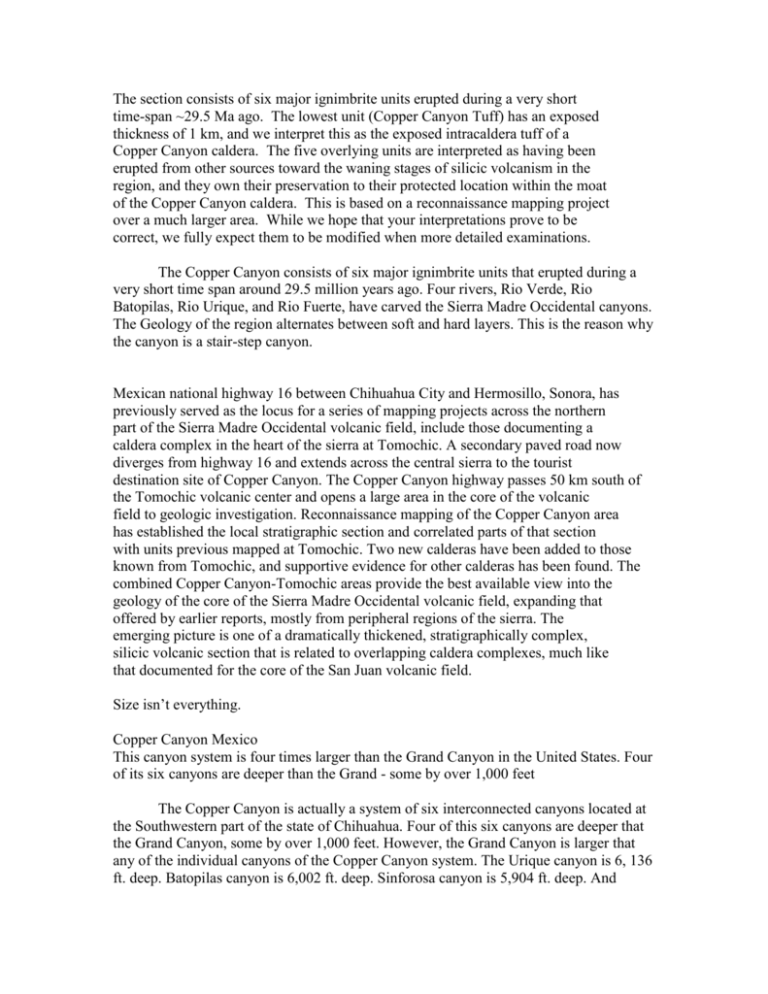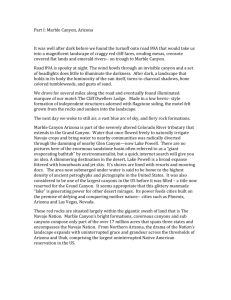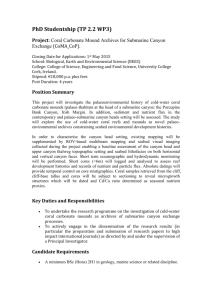escrito
advertisement

The section consists of six major ignimbrite units erupted during a very short time-span ~29.5 Ma ago. The lowest unit (Copper Canyon Tuff) has an exposed thickness of 1 km, and we interpret this as the exposed intracaldera tuff of a Copper Canyon caldera. The five overlying units are interpreted as having been erupted from other sources toward the waning stages of silicic volcanism in the region, and they own their preservation to their protected location within the moat of the Copper Canyon caldera. This is based on a reconnaissance mapping project over a much larger area. While we hope that your interpretations prove to be correct, we fully expect them to be modified when more detailed examinations. The Copper Canyon consists of six major ignimbrite units that erupted during a very short time span around 29.5 million years ago. Four rivers, Rio Verde, Rio Batopilas, Rio Urique, and Rio Fuerte, have carved the Sierra Madre Occidental canyons. The Geology of the region alternates between soft and hard layers. This is the reason why the canyon is a stair-step canyon. Mexican national highway 16 between Chihuahua City and Hermosillo, Sonora, has previously served as the locus for a series of mapping projects across the northern part of the Sierra Madre Occidental volcanic field, include those documenting a caldera complex in the heart of the sierra at Tomochic. A secondary paved road now diverges from highway 16 and extends across the central sierra to the tourist destination site of Copper Canyon. The Copper Canyon highway passes 50 km south of the Tomochic volcanic center and opens a large area in the core of the volcanic field to geologic investigation. Reconnaissance mapping of the Copper Canyon area has established the local stratigraphic section and correlated parts of that section with units previous mapped at Tomochic. Two new calderas have been added to those known from Tomochic, and supportive evidence for other calderas has been found. The combined Copper Canyon-Tomochic areas provide the best available view into the geology of the core of the Sierra Madre Occidental volcanic field, expanding that offered by earlier reports, mostly from peripheral regions of the sierra. The emerging picture is one of a dramatically thickened, stratigraphically complex, silicic volcanic section that is related to overlapping caldera complexes, much like that documented for the core of the San Juan volcanic field. Size isn’t everything. Copper Canyon Mexico This canyon system is four times larger than the Grand Canyon in the United States. Four of its six canyons are deeper than the Grand - some by over 1,000 feet The Copper Canyon is actually a system of six interconnected canyons located at the Southwestern part of the state of Chihuahua. Four of this six canyons are deeper that the Grand Canyon, some by over 1,000 feet. However, the Grand Canyon is larger that any of the individual canyons of the Copper Canyon system. The Urique canyon is 6, 136 ft. deep. Batopilas canyon is 6,002 ft. deep. Sinforosa canyon is 5,904 ft. deep. And Copper canyon is 5,770 ft. deep. All of the rivers that formed the canyons merged into the Rio Fuerte which continues it’s way to the Pacific and emerges into the Sea of Cortez. Formation The canyon formed during the cretaceous period around 40 and 80 million years ago. Clima y Cultura Fotos Barranca del cobre It covers some 28,000 sq. miles of gorges and ravines. Barranca del Cobre (Copper Canyon) is 5,770 ft. deep Barranca del Sinforosa is 5,904 ft. deep Barranca del Batopilas is 6,002 ft. deep Barranca del Urique is 6,136 ft. deep Formed during the cretaceous period 40-80 million years ago\ Urique river, Candemeña canyon and Huapoca canyon






